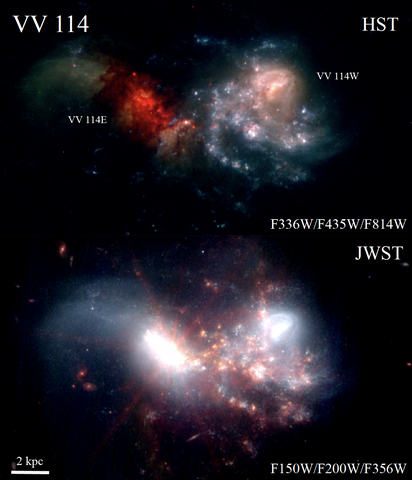Overview
Young massive star clusters (YMCs) host the majority of all massive stars, and therefore represent a fundamental unit of star formation and stellar feedback in galaxies. Central questions remain regarding the timescales and conditions necessary for YMCs to form and evolve in the densest and dustiest regions of the interstellar medium (ISM). With global star formation rates and efficiencies up to two orders of magnitude higher than our Galaxy, local luminous infrared galaxies (LIRGs: L_IR > 10^11 L_sun) host very massive, dust-enshrouded stellar nurseries. Here I will present results from Great Observatories All-Sky LIRG Survey (GOALS) HST and JWST Early Release Science (ERS) imaging campaigns. With HST we have discovered that, relative to the normal star-forming galaxies studied in the PHANGS and LEGUS surveys, the survival rate and maximum mass of YMCs is affected by the active merging-environment of LIRGs. Further, with NIRCam ERS observations of two YMC-rich LIRGs in GOALS, we find that up to 20% of IR-bright sources are undetected at optical wavelengths. This 'hidden' population of YMCs quadruples the number of young (1 - 3 Myr) and dust-buried (A_v ~ 10) sources identified in these galaxies. Characterizing the environments where both optically-visible and deeply-embedded clusters reside, represents a huge step towards understanding YMC formation and feedback in extreme star-forming galaxies.
